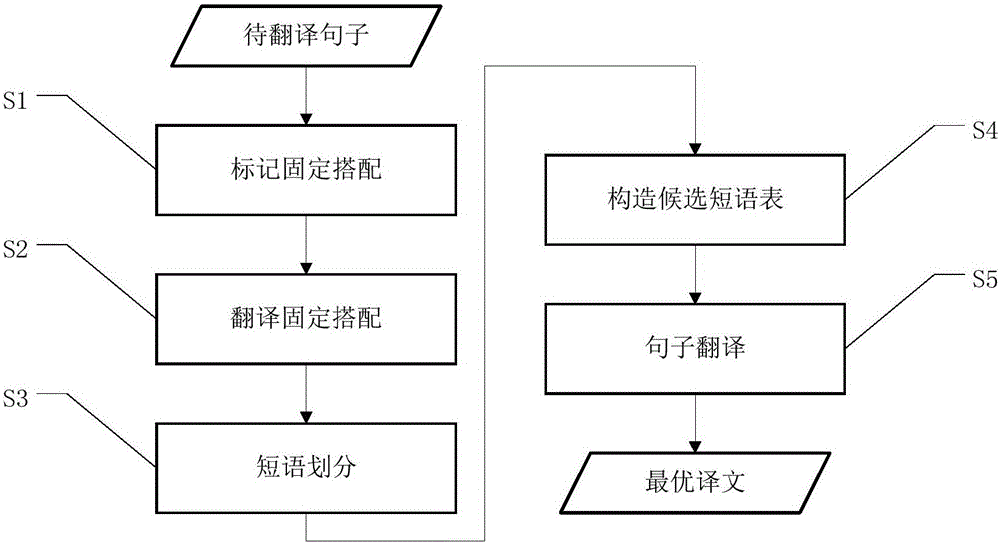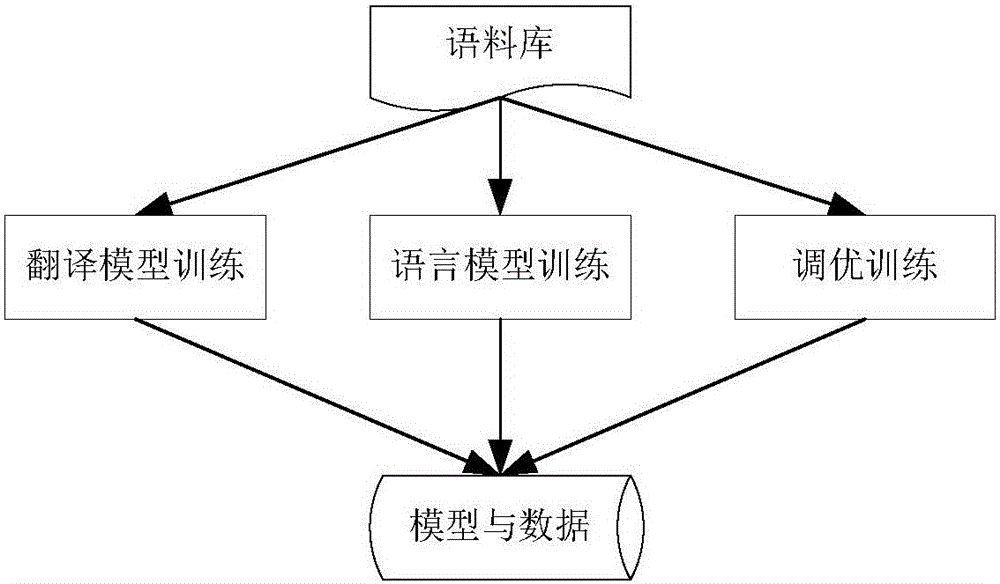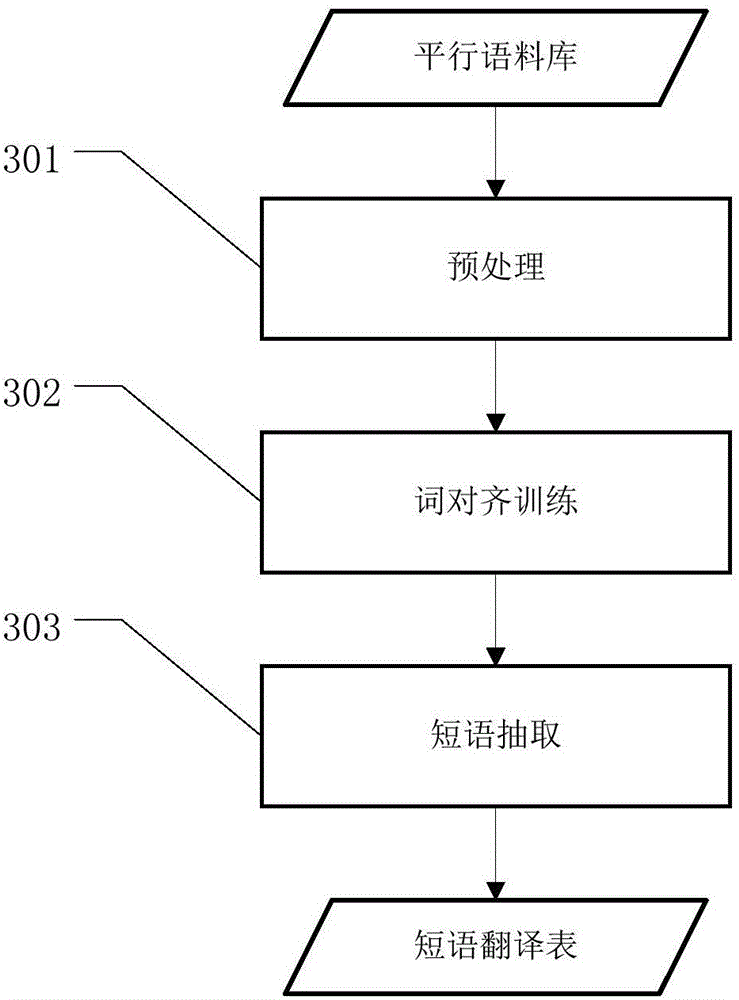Two-stage-type machine translation method with preferentiality of idiomatic phrases
A machine translation, two-stage technology, applied in the field of machine translation, can solve the problems of data sparseness and limited corpus size, so as to improve the translation effect and alleviate the problem of data sparseness
- Summary
- Abstract
- Description
- Claims
- Application Information
AI Technical Summary
Problems solved by technology
Method used
Image
Examples
Embodiment 1
[0044] Phrase-based statistical machine translation includes two parts, training and translation. The training part is mainly to obtain the model required by the decoder, wherein the phrase translation probability table in step S3 is obtained by the training part; after obtaining the training results such as the phrase translation probability table, The decoder uses the training results such as the phrase translation probability table to translate the sentence to be translated.
[0045] 1. The specific implementation of the training part is as follows:
[0046] The training mainly includes three parts, namely, translation model training, language model training and tuning training. For details, see figure 2 Those skilled in the art can understand that the translation model training is mainly to obtain the phrase translation probability table, and there are many existing training methods, one of which is as image 3 As shown, it is divided into the following three steps:
[...
PUM
 Login to View More
Login to View More Abstract
Description
Claims
Application Information
 Login to View More
Login to View More - R&D
- Intellectual Property
- Life Sciences
- Materials
- Tech Scout
- Unparalleled Data Quality
- Higher Quality Content
- 60% Fewer Hallucinations
Browse by: Latest US Patents, China's latest patents, Technical Efficacy Thesaurus, Application Domain, Technology Topic, Popular Technical Reports.
© 2025 PatSnap. All rights reserved.Legal|Privacy policy|Modern Slavery Act Transparency Statement|Sitemap|About US| Contact US: help@patsnap.com



